I’m back home in Virginia after a week on business in Oregon touring nurseries to select plants for Meadows Farms’ nurseries for Fall and Spring. I managed a few photos to show a bit about the nurseries since I’m certain that most people have never seen a large growing operation.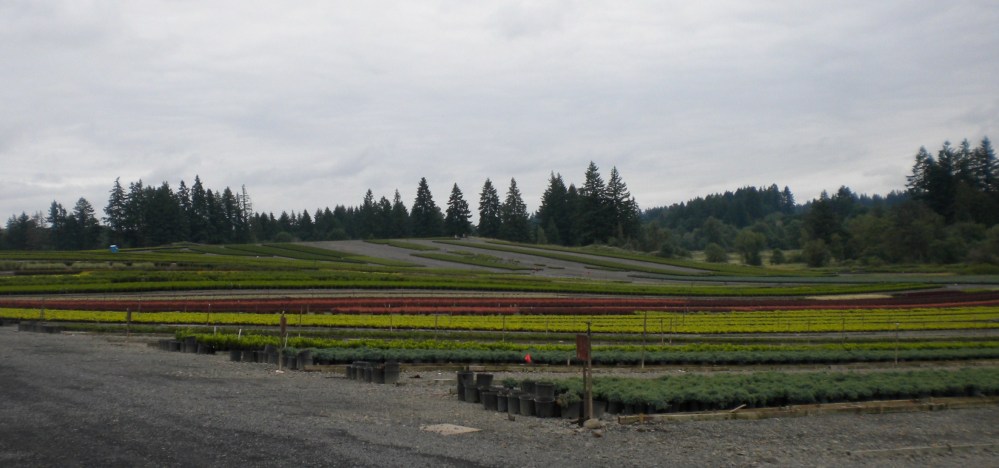
The weather was great, highs in the upper sixties to seventy and low fifties overnight, and appreciated more with the warm, humid, stormy weather at home. Regretfully, clouds prevented taking the classic Oregon nursery catalog picture of rows of plants with snow capped Mt. Hood looming in the background. 
Low humidity on the west coast allows nurseries to grow plants that struggle on the muggy east coast, particularly colorful evergreens that stress and fade with prolonged heat and humidity. 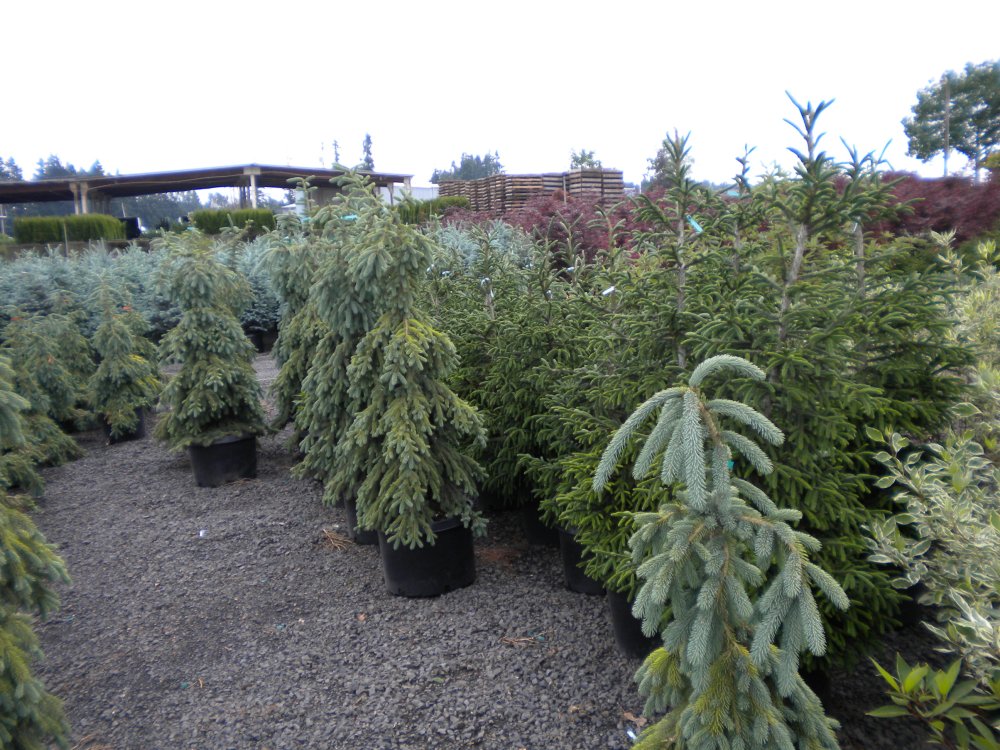
The photo above shows a variety of dwarf and weeping spruce, variegated-leaf shrub dogwoods, and red Japanese maples in the background, that were dug from their fields in early Spring and potted for Summer sale. 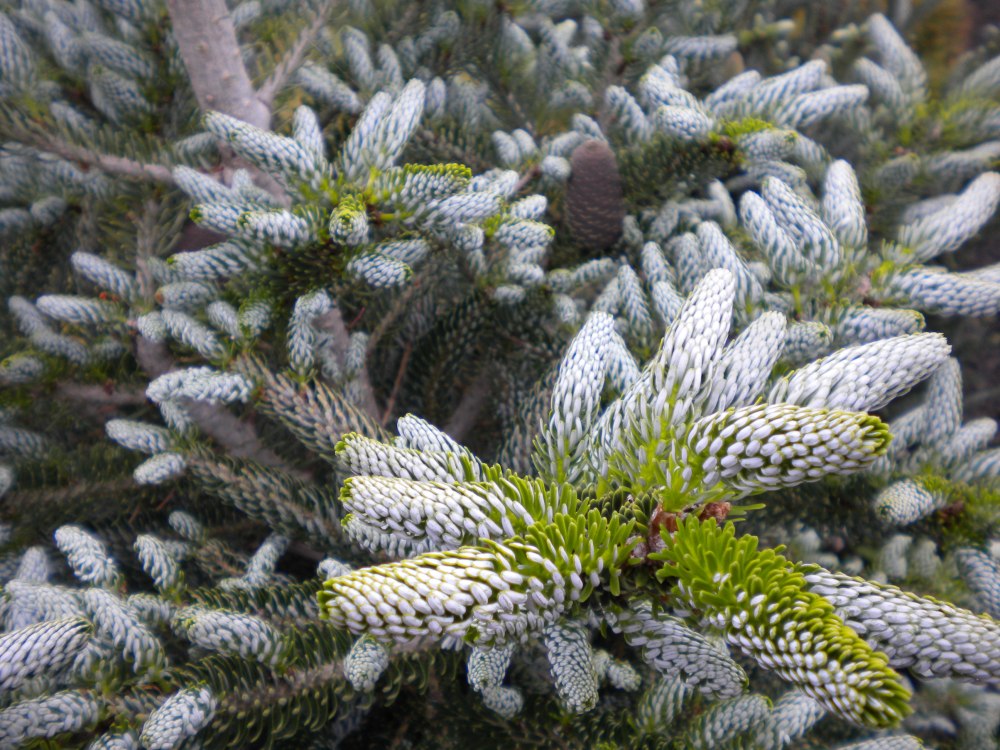
Some will be headed east next week, and a few will be headed to my garden, including the dwarf Korean fir (Abies koreana ‘Horstmann’s Silberlocke’) shown above. Though space is limited, there will always be room for interesting and unique additions, and in a week or so there will be several.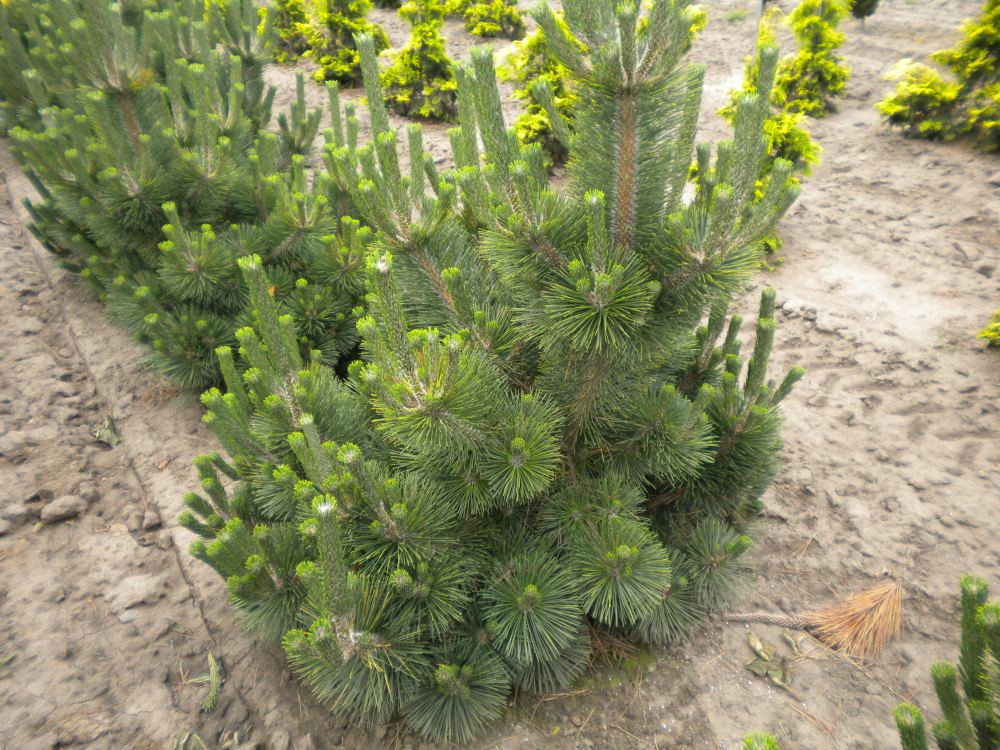
Plants grown in-ground generally can be dug only in late-Winter or early-Spring, or in the Fall after cool weather arrives, so the ‘Thunderhead’ black pine shown above will have to wait until next year.
One of the more popular Oregon plants in our garden centers are blue spruce. The photo below shows the range of color in spruce grown by one nursery in St. Paul. 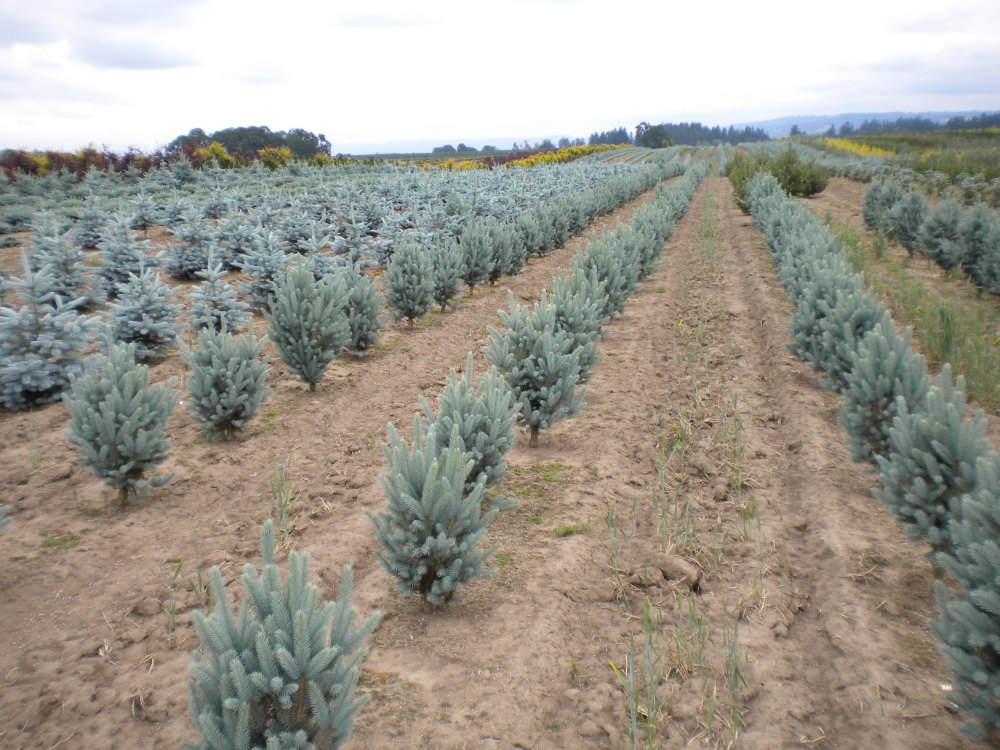
Most are grafted to assure the characteristics of the parent tree, since most do not come true from seed. A small section of the blue tree is slipped into an incision made in the host, usually a green needled spruce. After the wound heals, and the blue is growing, the above ground portion of the green spruce is cut away, leaving the roots of the green and the top of the blue spruce. 
If it appears that the rows of trees go on for miles, that’s because they do. A nearby nursery has fields with 100,000 Emerald Green arborvitae, all one size. There are plants of a single variety as far as the eye can see.
Today I’ve returned to my humble garden, scheming how to jam a few more treasures into the already crowded landscape. The violent storms of the past week have done little damage, just bent a flower stalk or two.
Japanese iris have continued to flower, more Stewartia buds have opened, hydrangeas, daylilies, yuccas, and many perennials have burst into bloom. June will continue to delight for weeks to come, so our journey through the garden will resume in a few days.